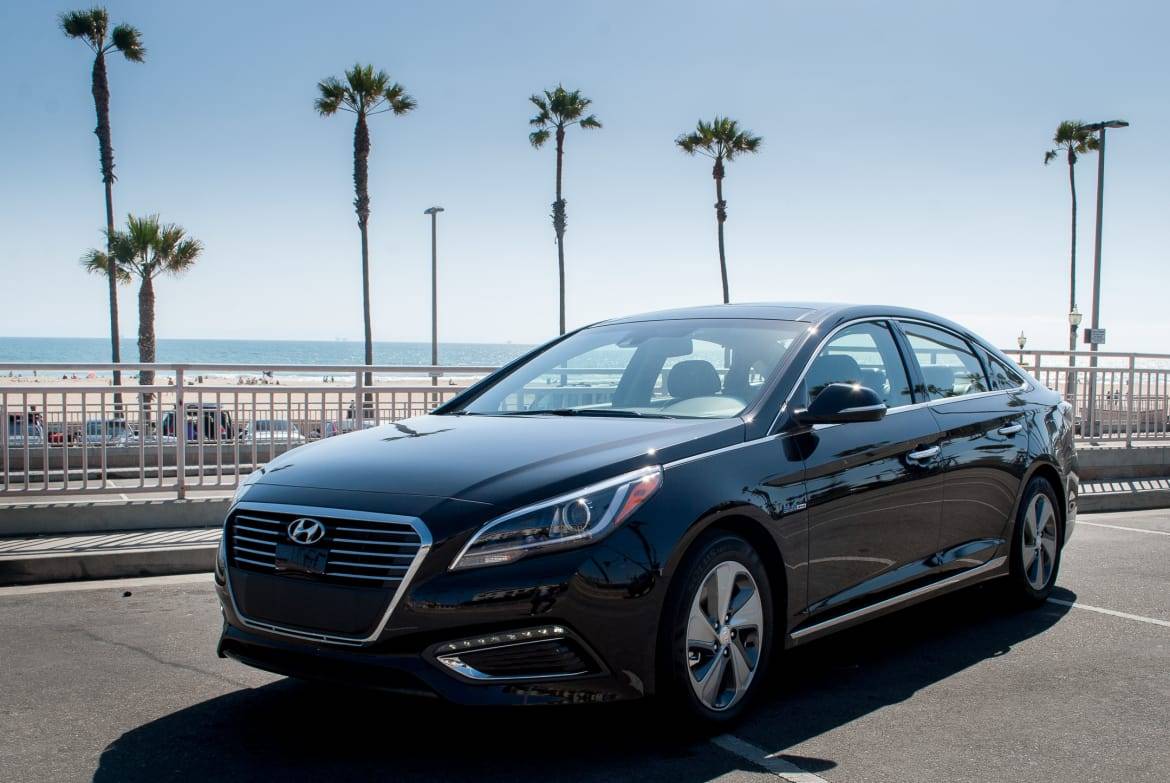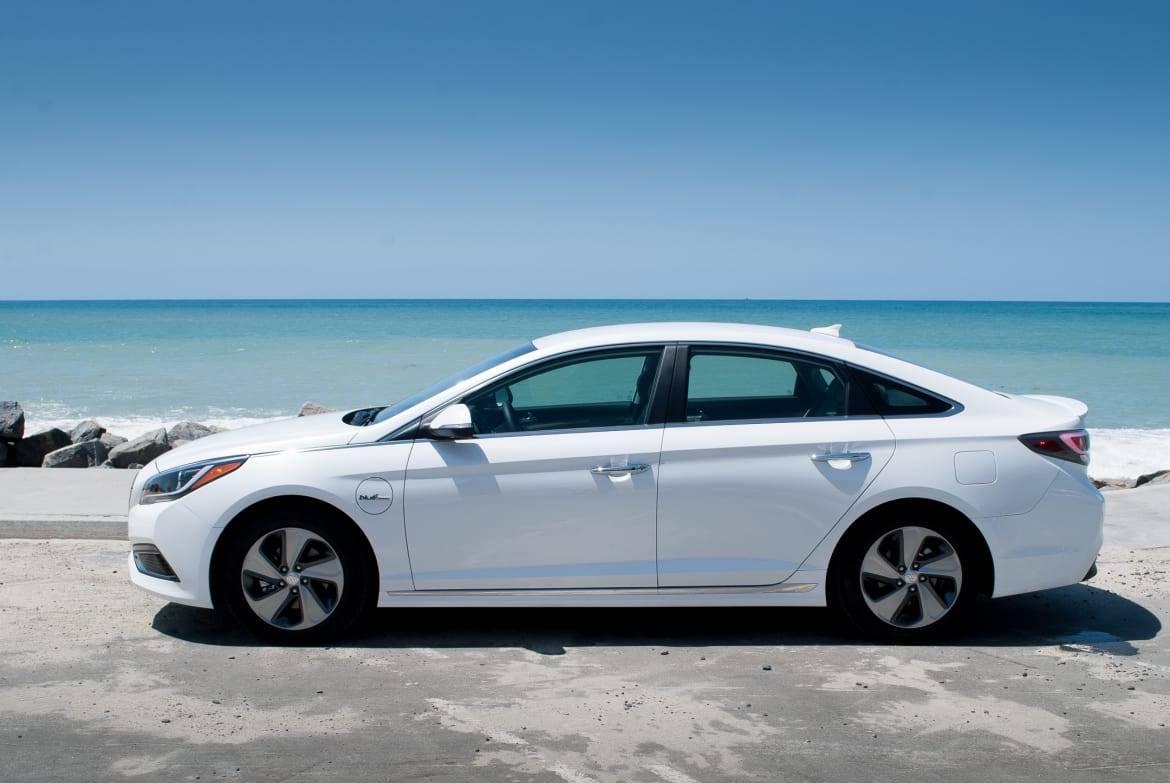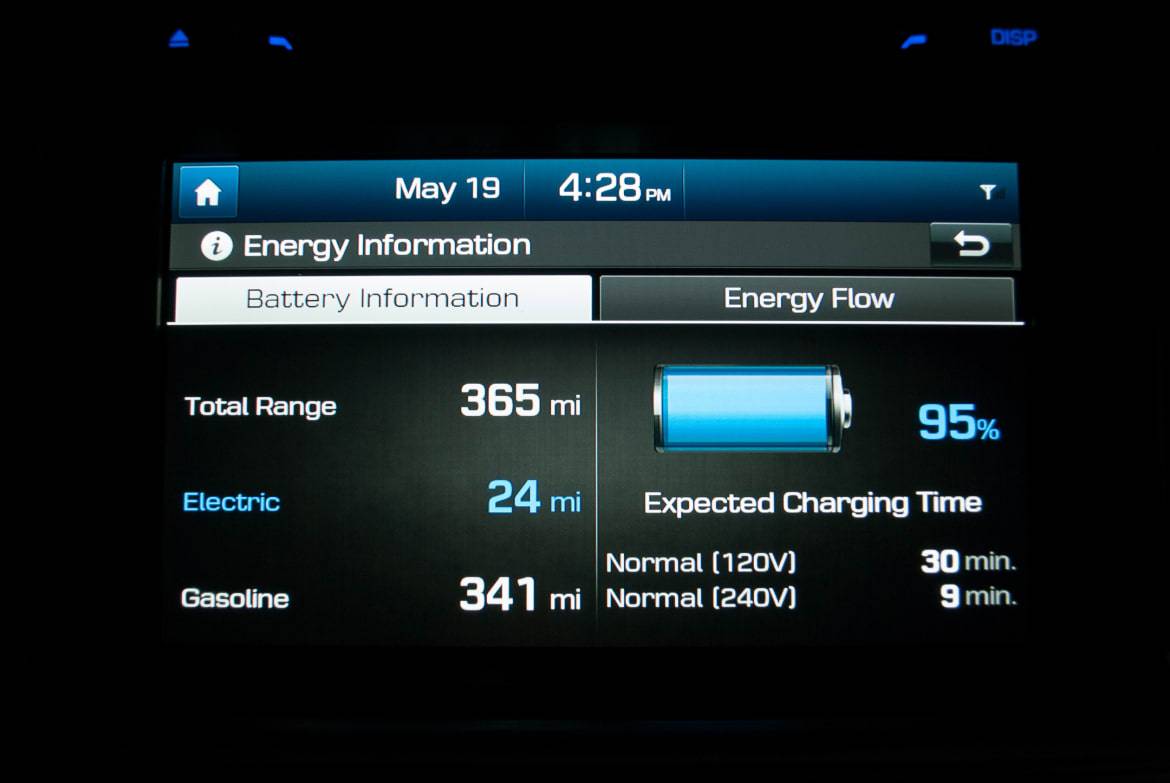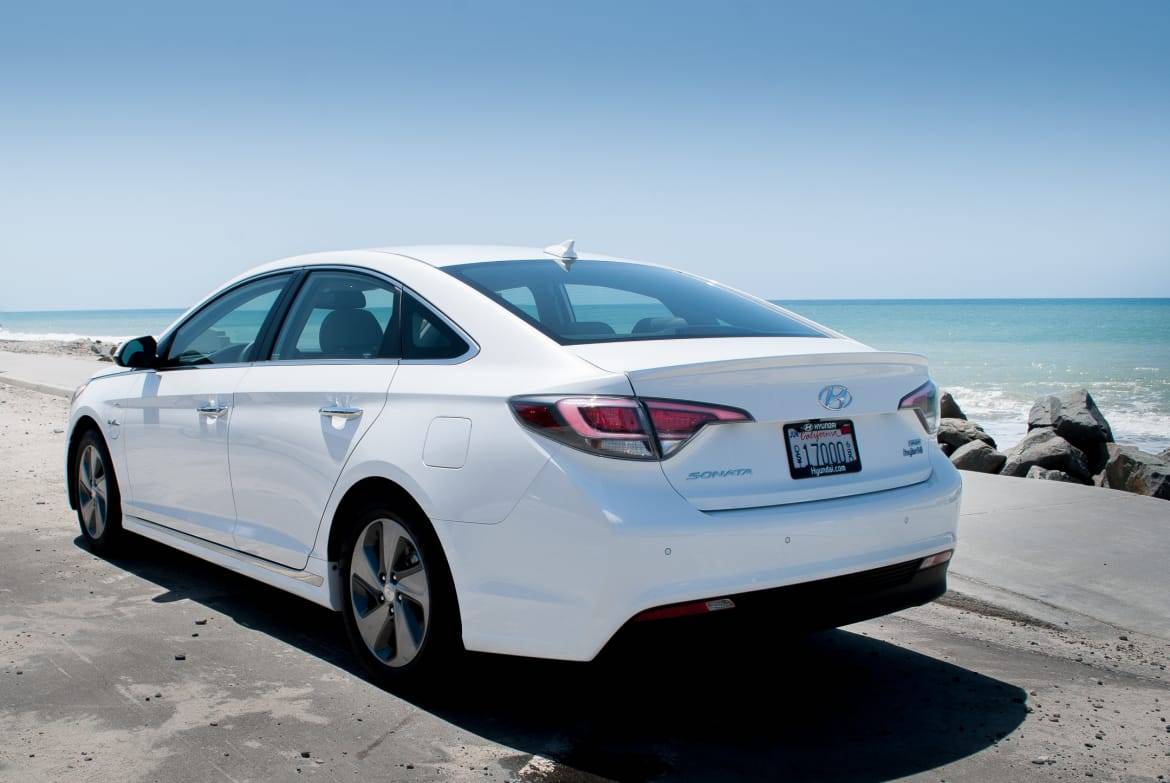2016 Hyundai Sonata Hybrid and PHEV: First Drive


Hyundai’s Sonata sedan was redesigned for the 2015 model year, getting new exterior styling, interior upgrades and powertrain refinements. These changes helped the 2015 Sonata win our $27,000 Midsize Sedan Challenge last fall and for 2016, Hyundai is rolling out both a hybrid and plug-in hybrid version of the popular car.
Related: 2016 Hyundai Sonata Hybrid: First Look
We recently took to the streets around Orange County in Southern California to see how these green versions of the Sonata handle the real world.
Sonata Hybrid
Thanks to a litany of powertrain changes, improved aerodynamics and efficiency updates, the 2016 Sonata Hybrid sees an 10 percent increase in combined fuel economy over the 2015 model. These updates included a larger battery that is rated at 1.62 kilowatt hours and a downsized gasoline engine (now 2.0 liters instead of 2.4). Drivers, though, won’t really notice a difference from these changes while on the road; the driving experience remains almost identical with the type of humdrum experience we’ve come to expect in many a hybrid sedan.
The numerous upgrades to the regular Sonata for 2015 make both the 2016 Sonata Hybrid and PHEV very quiet on the road, with the gas engine on or off.

Another welcome change for 2016 is the placement of the battery pack, which moves from the rear cargo area to the tire well. This creates a flat cargo floor in the trunk, and there are now 60/40-split folding rear seats allowing the storage of longer items.
Sonata PHEV

The real star of the day was the new Sonata PHEV. It is designed to compete with the Ford Fusion Energi and Honda Accord Plug-in Hybrid, fellow midsize cars with some electric range (21 miles for the Fusion and 13 miles for the Accord). On paper, the Sonata PHEV and its 24 miles of electric range (up from initial estimates of 22 miles) has the advantage, but where the Sonata PHEV really shines is on the road.
Most plug-in hybrids today seem to function like glorified replicas of standard hybrids with larger batteries and charge ports, but a driving experience and feel that is basically identical. For many hybrid vehicles, moving the car using only electric power means feathering the throttle, at levels that border on unsafe at times. Push too hard for an instant and the gas engine snaps to life. However, the Sonata PHEV is the first plug-in I’ve driven that functions as if it takes the EV (electric vehicle) portion of its name seriously.

Compared to the Sonata Hybrid, the PHEV gets a battery that is roughly six times larger (9.8 kwh versus 1.62 kwh) and is coupled to a more powerful electric motor (50 kilowatts versus 38 kW). Hyundai says the PHEV can travel up to 75 mph on electric power alone, an identical number to the Hybrid. But unlike the Hybrid, it can actually reach that number without gas pedal judo.
The PHEV does a terrific job transitioning between gas and electric driving as well in terms of both acceleration and deceleration. Start to coast on the highway and you can see the energy information screen flip through hybrid mode to idle to engine brake charging to charging mode with the engine completely off. All of these shifts are not reflected in the cabin; to occupants it just feels like letting off the gas. But in that time, the Sonata PHEV has used three different modes to add some power back to the battery and cut the engine to conserve fuel.
There are three selectable driving modes in the Sonata PHEV: EV, HEV and the new Battery Charge mode. EV leaves the car in electric mode as much as possible, while HEV functions more like your standard hybrid vehicle, activating the regenerative functions more aggressively to maintain battery charge levels. But the most intriguing of these modes by far is Battery Charge, which Hyundai said adds charge back to the battery — and does it fast.

Battery Charge is activated by holding down the HEV button below the gear lever; it puts a priority on recharging the battery whether the car is speeding up, slowing down or at idle. Hyundai said that this mode is designed for commuters who have a mix of city and highway driving. Start out by using electric power on the streets, then flip on Battery Charge mode while on the highway, and by the time you’re back to street driving the battery will have plenty of electric range added back to it.
I gave this a shot and after driving for 13 continuous miles on a free-flowing highway, 10 miles had been added back to the electric range. This calculates to a 77 percent rate of return on every mile driven in Battery Charge mode. Hyundai says the Sonata PHEV returns about 40 mpg combined when being used in HEV mode, but activating Battery Charge mode does tax the gas engine more, which will hurt fuel economy (Hyundai did not provide exact estimates). But even if fuel economy drops initially, the gains in electric range should more than make up for it.
The rate of charge in this mode is very quick. It is faster than plugging into a 240-volt charging station, which takes approximately three hours to deliver a full charge (it takes about nine hours on a standard 120-volt outlet). I got roughly 40 percent of the electric range back within 12 minutes of driving, which rivals quick charging stations.
Pricing and Availability

Hyundai did not offer pricing details on either vehicle, but did say that the Sonata Hybrid should be similar in price to the 2015 model, which ranged from $26,825 to $30,325 (including destination fees).
Hyundai was noncommittal on the final price for the PHEV as well, but did say that it will qualify for a federal tax credit rebate of $4,919. This beats the Ford Fusion Energi Plug-in ($4,007) and the Honda Accord Hybrid ($3,626), and there may also be state rebates available to buyers as well.
The 2016 Sonata Hybrid will hit dealerships in all 50 states sometime this summer. The Sonata PHEV will debut in the fall in two states initially (California and Oregon), with coverage soon expanding to eight other states (Connecticut, Maine, Maryland, Massachusetts, New Jersey, New York, Rhode Island and Vermont). Hyundai did say that even if you don’t live in one of these states, you will still be able to order one from dealerships nationwide.

Former L.A. Bureau Chief Brian Wong is a California native with a soft spot for convertibles and free parking.
Featured stories




